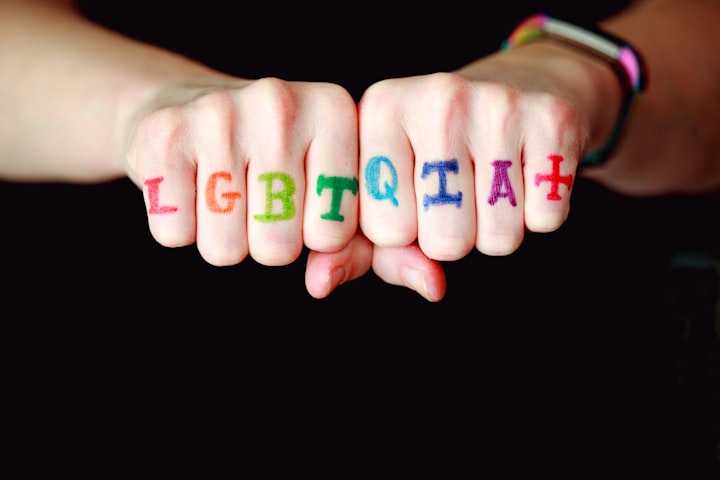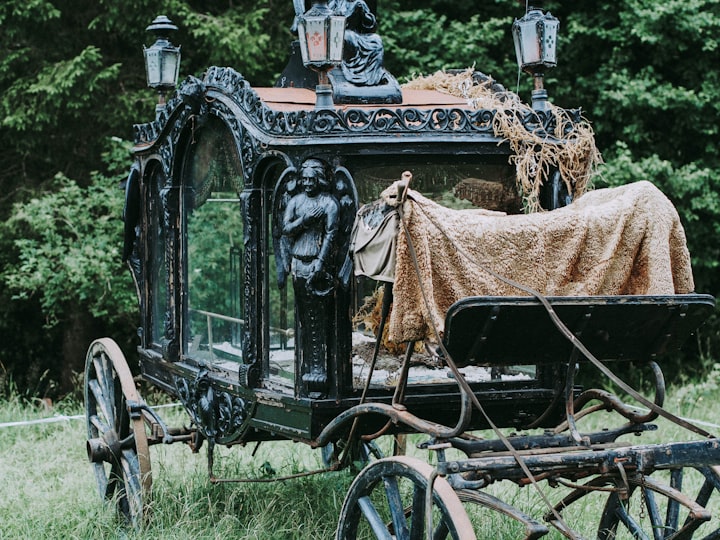Historical Queen Female Icons - Anne Lister (1791 - 1840)
Anne Lister was an amazing historical queer icon, who's life went against all social normalities of the time, she is now considered the 'First Modern Lesbian' through Historians dive through her life and her infamous journals

A Brief History of Anne Lister.
Anne, born in 1791, was brought up in a wealthy family that managed land in Halifax, England. When her uncle died, Anne was left to manage Shibden Hall and the estate that surrounded it, leaving her as a young, unmarried female landowner. At the Age of 15, Anne started a series of diaries. Within these preserved diaries, she had recorded the majority of her life, spanning across 26 volumes, with an estimate of 7'722 pages or approximately 5 million words. These diaries allowed historians an insight into what the real Anne Lister was like.
Anne was sent to a boarding school, where she met her first love, Eliza Raine. Eliza was Anne's roommate, and by the age of 15, her first romantic relationship. This relationship was hidden from teachers and her peers. It was never made clear if the teachers had found out about her love affair, but Anne already showed many qualities that disrupted the day to day workings of the school. Alongside her 'strange' love, she already was fighting against gender stereotypes, constantly questioning the clothing and education that she was expected to have. As for the time, women's education was very particular. It focused more on becoming a 'lady', a gratuitous host and how to keep a house, whereas Anne didn't want any part of this. She continually taught herself subjects that were thought to have only been applicable to the men of the time period, such as Mathematics and Science. This all came too much for the teachers and Anne was eventually asked to leave. It was reported in her diaries that the teachers feared Anne was corrupting the other students with her 'tomboyishness'. When she heard the news of Anne's expulsion, Eliza became incredibly depressed, to the point of hospitalization from which she never recovered.
In her lifetime, Anne was said to be a tremendous business woman, worldly traveller and mountaineer. She was one of the first people to ascend both Mount Peruda in the Pyrenees in 1830 and Mount Vignemale, France in 1838. Apart from this, to the society outsiders, it was very clear that Anne did not conform to the social norms. Anne chose to ignore the feminine 'frills' and opted for a more masculine approach to her outfits, while also dressing in almost all black throughout her life. This is why the local population gave her the nickname of 'Gentleman Jack'.
There are conflicting reports about the transparency to the public of her sexuality, but all we do know is that it was at least kept in close quarters. Through the deciphering of her diaries, it was known that Anne was only ever interested in women, most notably Eliza Raine, Isabella Norcliffe, Mariana Lawton, Maria Barlow and Ann Walker. In her diaries, she even stated that “I love and only love the fairer sex and thus beloved by them in turn, my heart revolts from any other love than theirs.” (29th January 1821)
After Eliza Raine, Mariana Lawton (Nee Belcombe) was a major influence to Anne Lister. In her diaries, Anne had stated that she wanted to marry Mariana, but couldn't due to financial circumstances. There were many accounts of Mariana and Anne's sexual relationship, describing every moment in detail within the diaries. It was also reported that they traveled 40 miles, regularly, to see each other in a time where the only modes of transport were by walking, carriage or horse-back. Mariana, sadly, had been forced to marry a wealthy widower before Anne could gather the financial funds to support them independently. Although engaged, the two women still saw each other until Mariana became afraid of their relationship being exposed.
After much travelling and 'soul-searching', Anne focused her attention on Ann Walker, a neighbouring heiress who was a greatly respectable woman in high society. Shortly after being properly introduced to one another, they began a relationship together. In 1834, Ann Walker moved into Shibden Hall with Anne Lister. However, in 1834, homosexual acts were illegal but the sexual relationships between woman were largely unacknowledged, and instead many people thought that they were 'close friends' who lived together for safety and security. Despite this, Anne Lister and Ann Walker, with the church's blessing, married on Easter Sunday in the Holy Trinity Church, Goodramgate, York. They then traveled the world together in 1839.
Anne Lister sadly died on the 22nd of September 1840 to an insect sting that she had gotten when traveling through Russia. Anne left behind her detailed journals and Shibden Hall to Ann Walker, who sadly was forcibly removed by her Brother-in-Law and placed in an asylum.
Anne Lister's Diaries
As stated before, Anne kept diaries detailing her every day movements. Those who have studied her diaries had commented that she was obsessive and left no detail out.. However, due to the contents of these diaries, they were kept hidden and a secret to others. It has only been in the past few decades that the contents have been deciphered. Inside the books, Anne Lister talked about many mundane things, such as any letters she received that day, how long it took to go to town or what she learnt that day, among other things. These diaries, alongside some minor personal accounts from locals and Ann Walker's own diary, are the only reason we know of Anne Lister's many passions.
The diaries themselves went into detail on the sexual experience and thoughts of women that Anne Lister had. The first record of Anne's homosexuality was an indepth 'play by play' of what happened between her and a fellow pupil, Eliza Raine. Anne, of course, wanted to disguise these thoughts so created a code using her knowledge of Greek, Latin, mathematics, punctuation and Zodiac signs to share every detail with her diaries. At the time, Anne had thought this to be uncrackable.
Between 1887 and 1892, Arthur Burrell began deciphering the diaries, not getting very far and only managing to work out the letters 'h' and 'e'. But after one of Anne Lister's descendants, John Lister, had died, Shibden House was opened to the public. The diaries were kept hidden, but Historian Helana Whitbread rediscovered them in 1982, spending 6 years deciphering Anne's code. During this time, Helena published the book ' I know my own heart: The Diaries of Anne Lister 1791-1840. Helena Whitbread still continues to work on deciphering the codes that Anne left in her diaries, as of December 2020.
Find Out More About Anne Lister
- https://www.annelister.co.uk/
- https://museums.calderdale.gov.uk/famous-figures/anne-lister
- https://www.visitcalderdale.com/blog/who-was-ann-walker
- https://www.bbc.co.uk/news/resources/idt-sh/the_life_and_loves_of_anne_lister
- https://artuk.org/discover/stories/lesbian-love-and-coded-diaries-the-remarkable-story-of-anne-lister
About the Creator
Gueniver Warren
Guen is a writer, focusing on fantasy, story-telling and real historical events within the world. She has a passion for creating content and currently studies screenwriting with the goal to diversify the media industry.






Comments
There are no comments for this story
Be the first to respond and start the conversation.